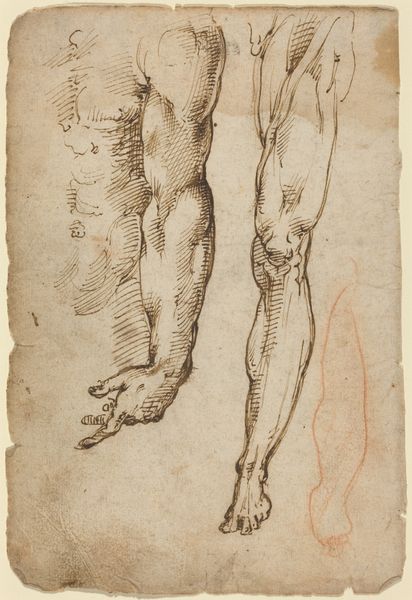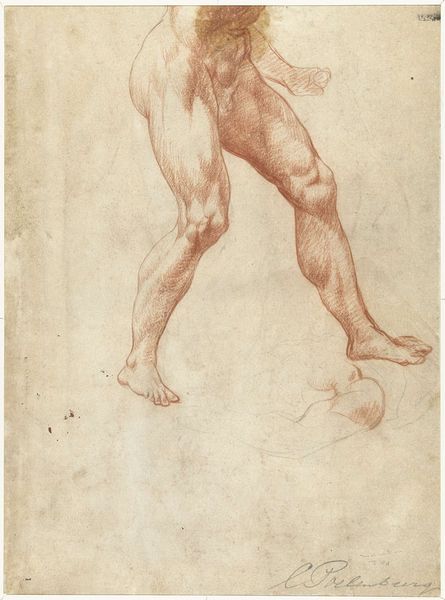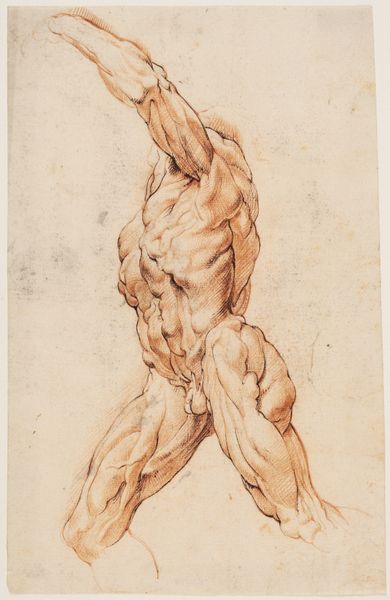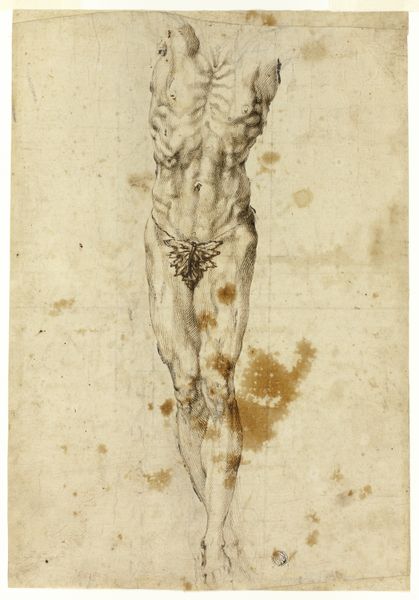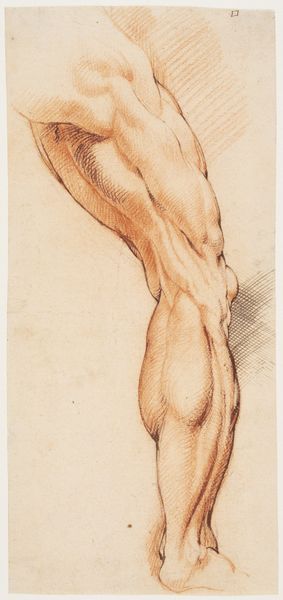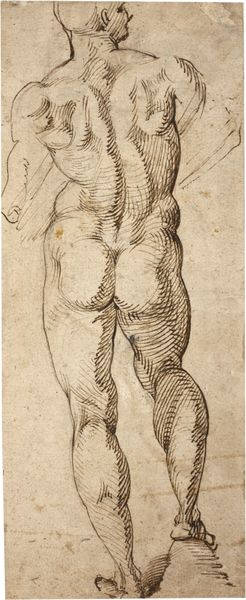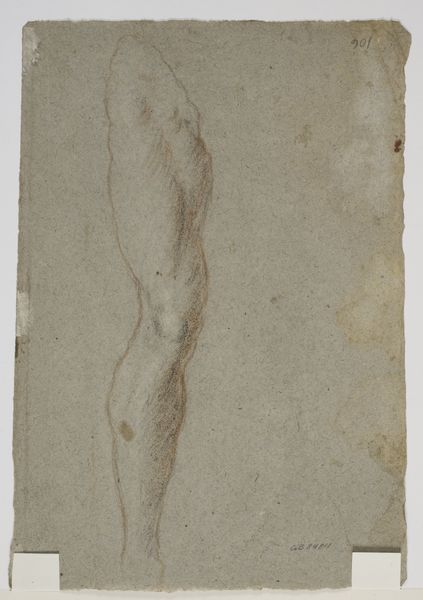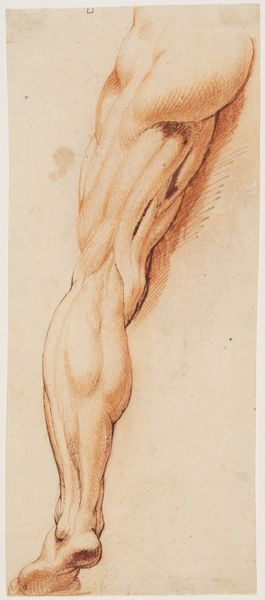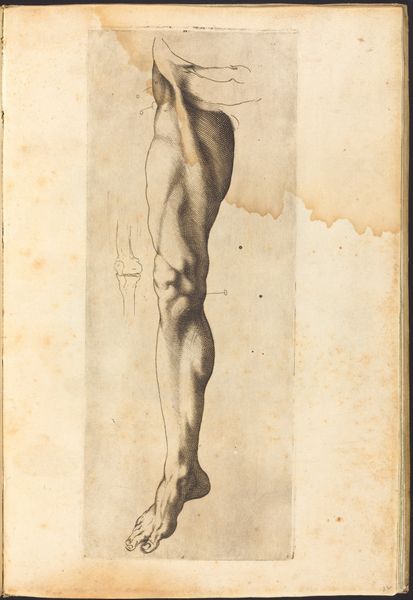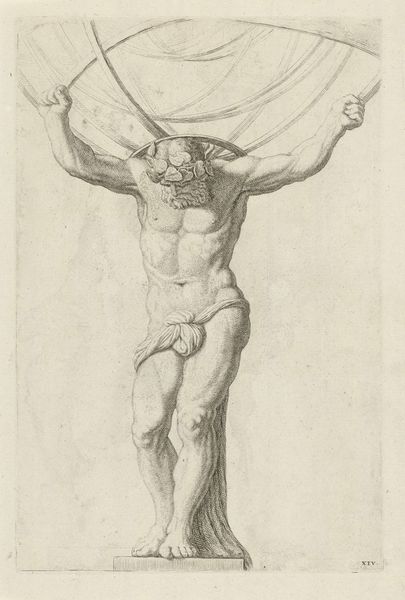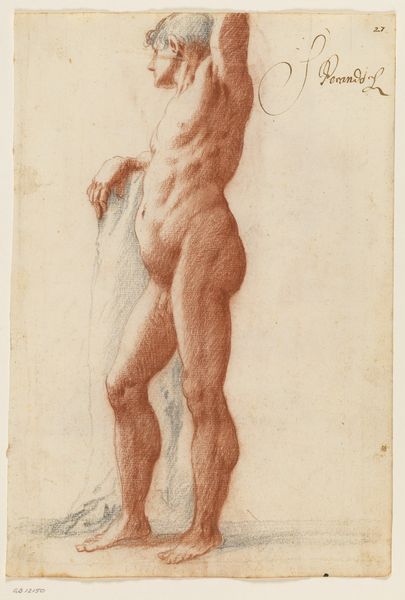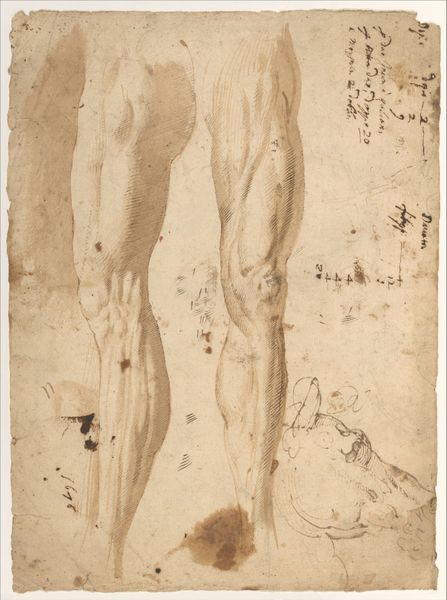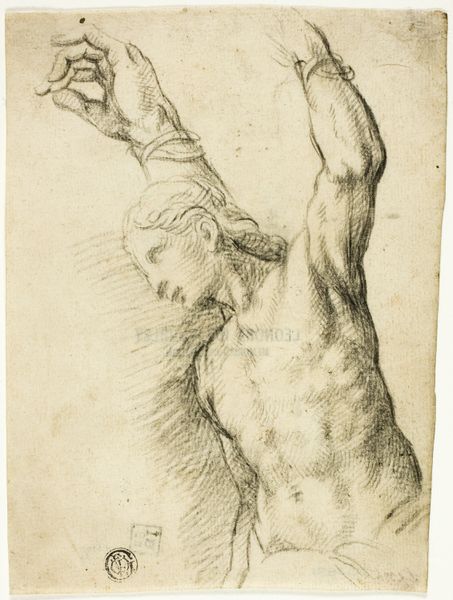
Male Figure Study, with Slight Sketch of Seated Figure 1540 - 1550
0:00
0:00
drawing, paper, ink, chalk, pen
#
portrait
#
drawing
#
high-renaissance
#
figuration
#
paper
#
ink
#
pencil drawing
#
chalk
#
pen
Dimensions: 269 × 191 mm
Copyright: Public Domain
Curator: The detailed drawing before us, rendered in pen, ink, and chalk on paper, presents a "Male Figure Study, with Slight Sketch of Seated Figure," attributed to a follower of Michelangelo Buonarroti, dating from 1540 to 1550. It is held in the collection of the Art Institute of Chicago. Editor: Well, it's certainly…legible. The almost clinical depiction of musculature and the stark contrast makes me think immediately of power, or perhaps the *potential* for power, frozen in a moment of artistic analysis. Curator: That power is quite literal when considering this was produced during the High Renaissance when there was increased attention towards classical ideals of male beauty. How this translates into a visual language and a broader reflection of socio-political power structures are some questions worth posing here. Consider that the idealized form of the male figure served as a potent symbol in a culture dominated by male authority. Editor: You raise a valuable point, situating this study within its cultural context. However, before fully exploring its impact, it's worthwhile to analyze how line and shading build form. The use of hatching is meticulous, defining volume and the direction of light with real precision. It’s a wonderful exercise in the push and pull of representation. Curator: Indeed. Consider also that such anatomical studies were crucial, not merely for mastering artistic technique, but for engaging in dialogues of intellectual progress with anatomy. During the Renaissance period artists often dissected corpses, which involved crossing social boundaries to advance human understanding and inform their craft. So you’re absolutely right, there is representation— but it is not without physical and social complexities. Editor: Complexities indeed. The slight, sketched figure behind the main leg introduces ambiguity. Does it hint at movement or reflect preliminary planning? It is less definite and almost ghost-like—but essential for overall balance. Curator: This duality, and lack of solidity in certain areas, creates a striking comparison in terms of race and identity and raises questions concerning visibility and marginalization that could also serve as interesting perspectives when trying to contextualize a high renaissance artwork from a modern point of view. Editor: Ultimately, the beauty of this piece is in its rigorous application of art principles, and yet it seems we both find ways to make compelling observations about this anatomical exploration.
Comments
No comments
Be the first to comment and join the conversation on the ultimate creative platform.
